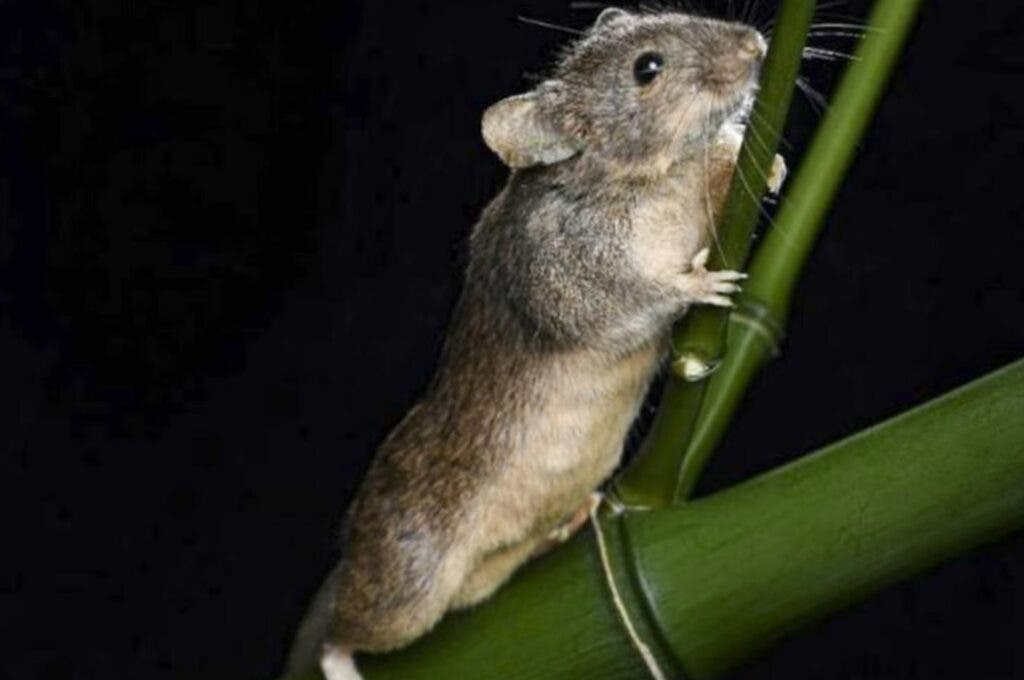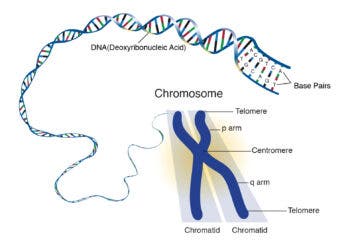Researchers at the Chinese Academy of Sciences report fully and successfully recombining the chromosomes of a living mouse, an animal named Xiao Zhu, or “Little Bamboo”.

In a laboratory at the Chinese Academy of Sciences, one unassuming mouse called Little Bamboo is, in fact, the first of its species — a man-made species. This mouse’s genome has 19 pairs of chromosomes, one fewer than natural, and it’s all due to the meddling of human scientists.
The team in Beijing “fully recombined” the mouse’s genes through a process whereby its chromosomes were broken down into various segments and then put back together in a new set-up. This is the first time such a process was carried out on the scale of a living organism without severely impacting its ability to survive. This means that Little Bamboo is, in effect, the first individual of a completely new and man-made species of rat, and the world’s first mammal with fully recombined genes.
New Rats
“Mammalian genomes are much more complex than yeast genomes, and complete chromosomal rearrangements in mammals have remained unsuccessful,” said lead author Li Wei, a researcher with the Institute of Zoology at the Chinese Academy of Sciences in Beijing, for the state-owned Science and Technology Daily.
Chromosomes are condensed DNA strands bunched together in different shapes which help keep DNA tidy in a cell’s nucleus. They are roughly equivalent to a compressed digital document, if you will, helping the data occupy less space on the hard drive of cells.
These bunches of DNA naturally break down and recombine during sexual reproduction, when pieces of each parent’s chromosomes bind to the other parent’s equivalent chromosome pieces to form an entirely new genome that inherits parts of both. This process is very complicated and delicate, and errors here can cause quite a lot of issues for any affected offspring. Researchers have been trying to interfere with this process to help address such errors when they happen, but we’ve had extremely limited success — and what success we did have was only using single-cell organisms like yeast.
But the current study showcases that such interventions can be performed, even in living organisms, paving the way for synthetic biology to tackle a whole range of new experiments.
For the paper, Li and his colleagues used the gene-editing tool CRISPR. This is based on natural gene-modification processes and acts much like a scissor-and-glue, allowing researchers to cut DNA strands in specific areas and weld in new bits, before tying the string back together. They used CRISPR to manipulate the chromosomes contained by a unique reproductive stem cell – the mouse which they created specifically for this experiment.
Previous attempts by the team resulted in those recombination errors we mentioned earlier. The issues arose when they tried to stitch together two very long chromosome pieces, which would attach imperfectly. These cells would go on to develop into unhealthy, deformed specimens or ones that exhibited strange behaviors, or would make the animals unviable outright, causing them to die.
Their answer was to use shorter chromosome sequences and reduce the total number of chromosomes to 19 pairs, one fewer than mice have naturally. Through this approach, they managed to create a new species which, despite having a completely different chromosome package in their cells compared to natural mice, appears to be completely healthy and show normal behavior.
The recombined mice were then allowed to mate with un-modified animals, which did result in successful pregnancies, albeit at a relatively low rate. The offspring of these pairs contained the manipulated chromosomes of their parents, showcasing that the effects of such gene editing can extend through the generations.
“This means that, for the first time in the world, we have achieved complete chromosomal rearrangement in mammals, making a new breakthrough in synthetic biology,” said Li, according to the South China Morning Post. “This research is a breakthrough in bioengineering technology, helping to understand the impact of large-scale remodelling of mammalian chromosomes, and to gain a deeper understanding of the molecular mechanisms behind growth and development, reproductive evolution, and even the creation of a species.”
Due to the observed ability to conserve genes across generations, the team is confident that their approach could help researchers study how genetics influence conditions like infertility or cancers, and how they could be treated.
Although the experiment had been approved by the Chinese Academy of Science’s research ethics committee, the use of CRISPR on human embryos is currently strictly prohibited in China, so the team has taken many steps in this direction.





